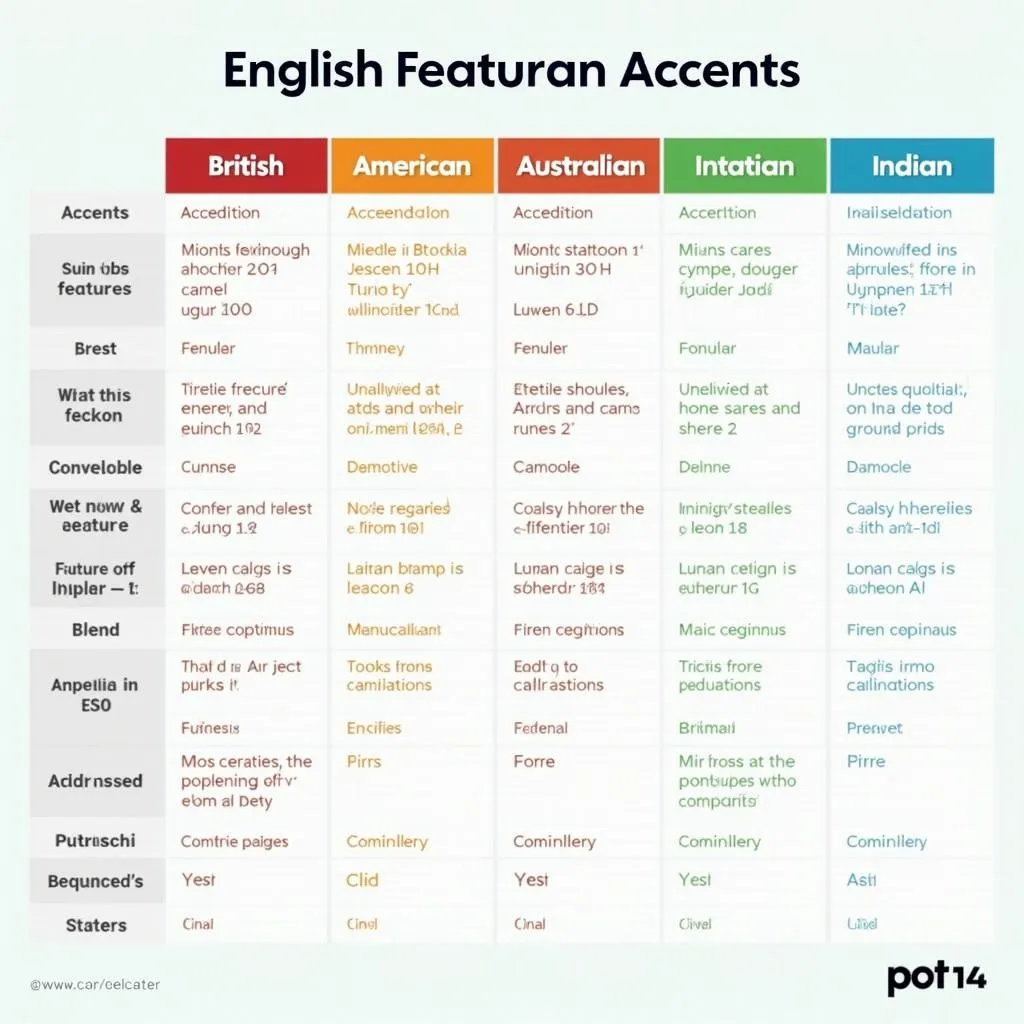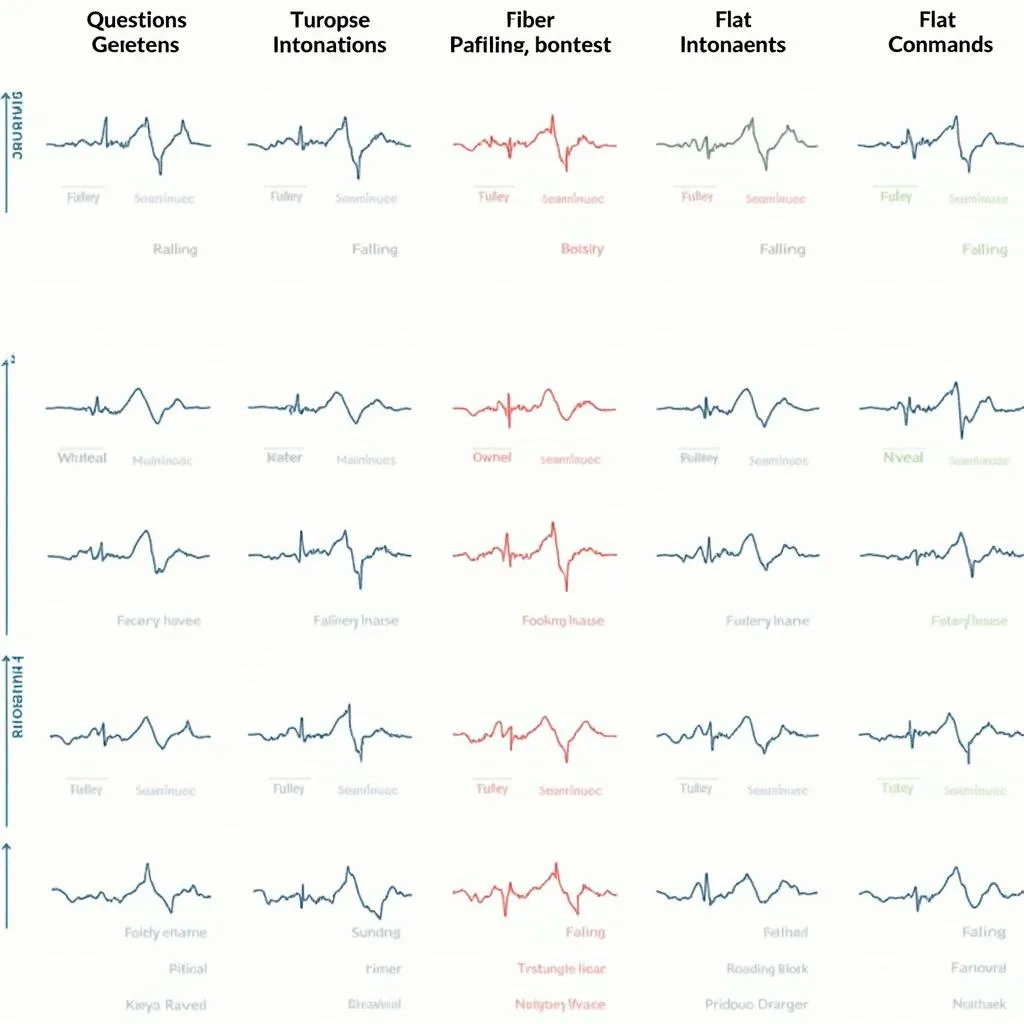The PTE listening module presents a unique challenge: deciphering diverse accents. For test-takers aiming to excel, understanding and adapting to accent diversity is crucial. This comprehensive guide will equip you with strategies to tackle the PTE listening module’s accent variations effectively.
Understanding Accent Diversity in PTE Listening
PTE Academic incorporates a wide range of English accents to reflect real-world language use. This diversity can include:
- British English (RP and regional accents)
- American English (Standard and regional varieties)
- Australian English
- Canadian English
- Indian English
- South African English
Recognizing these accents is the first step towards PTE academic listening module practice resources. Familiarity with various accents enhances your ability to comprehend spoken English accurately.
 PTE Listening Accent Diversity Map
PTE Listening Accent Diversity Map
Strategies for Mastering Accent Diversity
1. Exposure is Key
Immerse yourself in a variety of English accents:
- Watch international news channels
- Listen to podcasts from different English-speaking countries
- Engage with YouTube videos featuring diverse speakers
Regular exposure trains your ear to recognize and adapt to different pronunciation patterns quickly.
2. Focus on Context
When encountering unfamiliar accents:
- Pay attention to the overall context
- Look for key words to piece together the message
- Don’t fixate on individual words you can’t understand
Remember, comprehension is about grasping the main idea, not catching every single word.
3. Practice Active Listening
How to practice active listening for PTE success is crucial. Engage with the content by:
- Predicting what might come next
- Visualizing the scenario being described
- Mentally summarizing key points as you listen
These techniques keep you engaged and improve overall comprehension, regardless of the accent.
4. Identify Accent Features
Each accent has unique characteristics:
- British English often features dropped ‘r’ sounds and glottal stops
- American English typically has a rhotic ‘r’ and flapped ‘t’ sounds
- Australian English is known for its rising intonation at sentence ends
Understanding these features helps you anticipate and interpret sounds more accurately.
 Accent Feature Comparison Chart
Accent Feature Comparison Chart
5. Use Transcripts for Practice
Utilize transcripts when practicing:
- Listen to an audio clip without looking at the transcript
- Write down what you hear
- Compare your notes with the transcript
- Re-listen, focusing on parts you misheard
This method helps pinpoint specific accent challenges and improves your ability to transcribe accurately during the test.
Common Pitfalls and How to Avoid Them
-
Assumption Trap: Don’t assume you won’t understand certain accents. Approach each listening task with an open mind.
-
Panic Response: If you encounter a difficult accent, stay calm. Remember your strategies and focus on the overall message.
-
Over-reliance on Familiar Accents: While comfort with one accent is good, neglecting others can lead to test-day surprises. Diversify your practice.
-
Ignoring Prosody: Pay attention to stress, rhythm, and intonation. These elements often carry meaning across different accents.
-
Lack of Real-world Practice: Supplement your study materials with real-world listening experiences to build versatility.
Dr. Emma Thompson, a renowned PTE expert, emphasizes:
“The key to mastering accent diversity in PTE listening is not just recognition, but adaptability. Train your ear to be flexible, and you’ll find that understanding various accents becomes second nature.”
Advanced Techniques for Accent Mastery
1. Shadowing
Practice “shadowing” speakers with different accents:
- Listen to a short audio clip
- Repeat what you hear, mimicking the accent as closely as possible
- Focus on matching intonation and stress patterns
This technique improves your ability to process and reproduce diverse speech patterns quickly.
2. Accent-Specific Vocabulary
Certain accents may use unique vocabulary or expressions. Create a list of accent-specific terms you encounter during practice. For example:
- British: “Cheers” (thank you/goodbye)
- American: “Awesome” (great)
- Australian: “Arvo” (afternoon)
Familiarizing yourself with these terms can prevent confusion during the test.
3. Intonation Analysis
Different accents have distinct intonation patterns. Practice identifying and replicating these patterns:
- Rising intonation in questions
- Falling intonation for statements
- Variations in emphasis and stress
Understanding these patterns aids in predicting speaker intent and message structure.
 PTE Listening Intonation Pattern Guide
PTE Listening Intonation Pattern Guide
4. Accent Switching Drills
Improve your adaptability with accent switching exercises:
- Prepare audio clips from different accent sources
- Play them in random order
- Practice quickly adapting your listening strategy for each clip
This drill simulates the varied accent exposure you’ll experience in the actual PTE test.
Leveraging Technology for Accent Practice
Utilize technology to enhance your accent diversity training:
- Use language learning apps with accent options
- Explore accent reduction software to understand pronunciation differences
- Engage with AI-powered conversation partners that can simulate various accents
How to practice listening to different accents for PTE provides additional tech-savvy strategies to boost your skills.
Conclusion: Embracing Accent Diversity
Mastering accent diversity in the PTE listening module is a journey of exposure, practice, and adaptability. By implementing these strategies and consistently challenging yourself with varied accents, you’ll develop the skills needed to excel in this crucial component of the PTE Academic test. Remember, each accent you encounter is an opportunity to broaden your linguistic horizons and enhance your global communication skills.
FAQ
How many different accents can I expect in the PTE listening module?
The PTE listening module typically includes 3-5 different English accents, primarily focusing on British, American, and Australian varieties, with occasional inclusions of other regional accents.
Can I request a specific accent for my PTE test?
No, the PTE Academic test is designed to assess your ability to understand various English accents. You cannot choose or request a specific accent for your test.
What if I completely fail to understand an accent during the test?
Stay calm and focus on keywords and context. Even if you miss some details, you can often infer meaning from the parts you do understand. Remember, other test-takers may face similar challenges.
How long does it typically take to become comfortable with multiple accents?
With consistent practice, most test-takers see significant improvement in 4-6 weeks. However, this can vary based on individual exposure and learning pace.
Are some accents more difficult than others in the PTE test?
Difficulty often depends on your personal exposure. However, many test-takers find regional varieties of major accents (e.g., Scottish English, Southern American English) more challenging than standard forms.
Does the PTE listening module include non-native English accents?
While the PTE primarily uses native English accents, it occasionally includes clear, fluent non-native speakers to reflect real-world language use in academic settings.